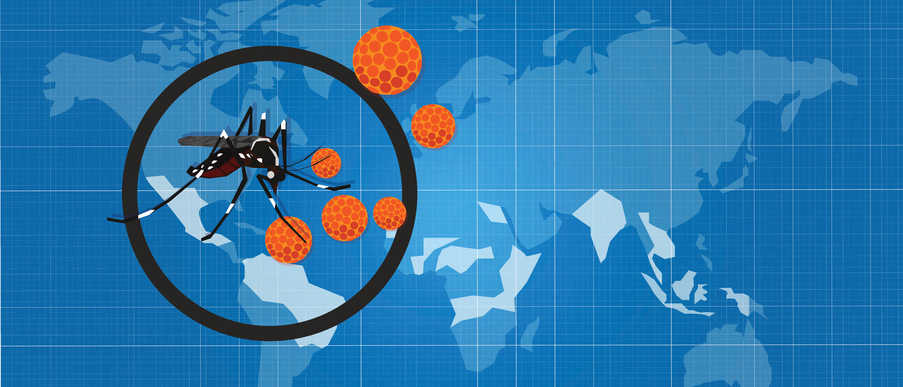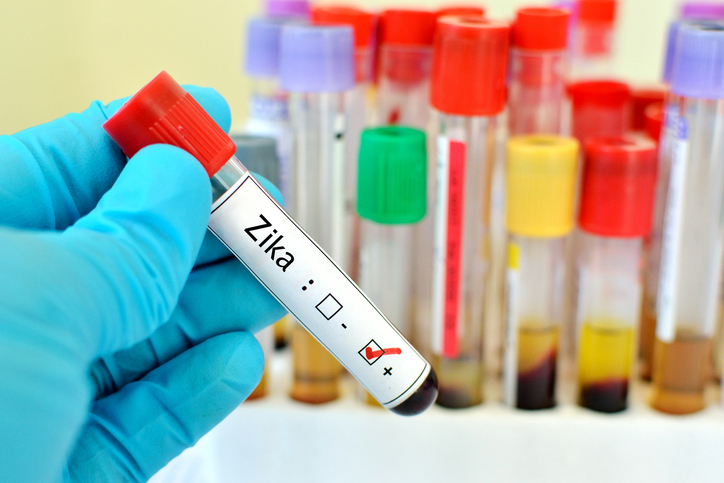
Health officials recently reported Florida’s first sexually transmitted Zika infection of 2017, which happened in Pinellas County and brings the statewide total to 90 cases this year.
The person who acquired Zika through sex had not traveled outside of Florida, but the partner recently visited Cuba and fell ill with symptoms consistent with the virus. Both persons tested positive for Zika, the Florida Department of Health reported.
State health officials emphasized that there is no evidence of active spread of Zika by mosquitoes anywhere in Florida, but they advised residents to take precautions if they or their partners have traveled to an area with ongoing transmission of the virus.
"It is important to remember Zika can also be transmitted sexually and to take precautions if you or your partner traveled to an area where Zika is active. If the department identifies an area where ongoing transmission of Zika is taking place, we will notify the public immediately," officials said.
Zika can cause a mild illness, with fever, rash and joint pain, or no symptoms at all in some people. But infection during pregnancy can lead to severe brain-related birth defects.

Back in July of 2016, New York City reported the first documented case of female-to-male sexual transmission of Zika virus infection. All previously reported cases of sexually transmitted Zika virus infection were spread from men to their sex partners.
CDC recommends that all pregnant women who have a sex partner who has traveled to or resides in an area with Zika use barrier methods every time they have sex or they should not have sex during the pregnancy. Although no cases of woman-to-woman Zika transmission have been reported, these recommendations now also apply to female sex partners of pregnant women.
While Zika cases in Florida have declined compared with last year, the state has reported 118 cases in 2017, including 90 travel-related cases. An additional 28 Zika infections with exposure in 2016 but tested this year also have been reported, including six locally acquired cases and 22 with undetermined exposure.
How To Avoid Zika When Traveling
1. Since Zika and other mosquito-borne illnesses are primarily spread by a mosquito species called the Aedes Aegypti, it is important to get rid of potential sites that the bug may use to breed.
“Get rid of any standing water in any type of flower pots or anything like that,” said Joseph Conlon, a retired, 20-year Navy epidemiologist who now serves as a technical advisor to the American Mosquito Control Agency. “Even places you’re going on vacation. If you see flower pots and whatnot, I would consider dumping them out, because those are where mosquitoes are breeding.”
2. Remember to dress properly when going outside and avoiding peak times of mosquito activity.
“The mosquitoes that transmit the Zika virus prefer dark colors, and they tend to bite during the day,” he said. “So, wear light-colored clothing, and make sure that the clothing is very loose, because mosquitoes can and will bite through tight-fitting clothing.”
3. It is important to regularly apply bug repellent that has been registered with the Environmental Protection Agency (EPA) .
“There’s a lot of repellents out there, stuff on the internet, that makes all these claims about how they repel mosquitoes with oil of cloves and things like that,” he said. “But this is potentially a matter of life and death, and you should really stick to the stuff that has been registered with the EPA.”
Parents should also keep in mind that many EPA-registered bug sprays contains a chemical known as DEET (N, N-Diethyl-meta-toluamide), which can be dangerous to humans, especially children, if utilized incorrectly. Only sprays containing less than 30 percent DEET should be used, and care should be taken to avoid spreading the chemical to a child's mouth, eyes or hands.
Since Zika infections can be asymptomatic and therefore hard to recognize, travelers should continue to wear bug repellent for up to two weeks after returning home as well, to prevent an unknown infection from spreading to local mosquito populations.









